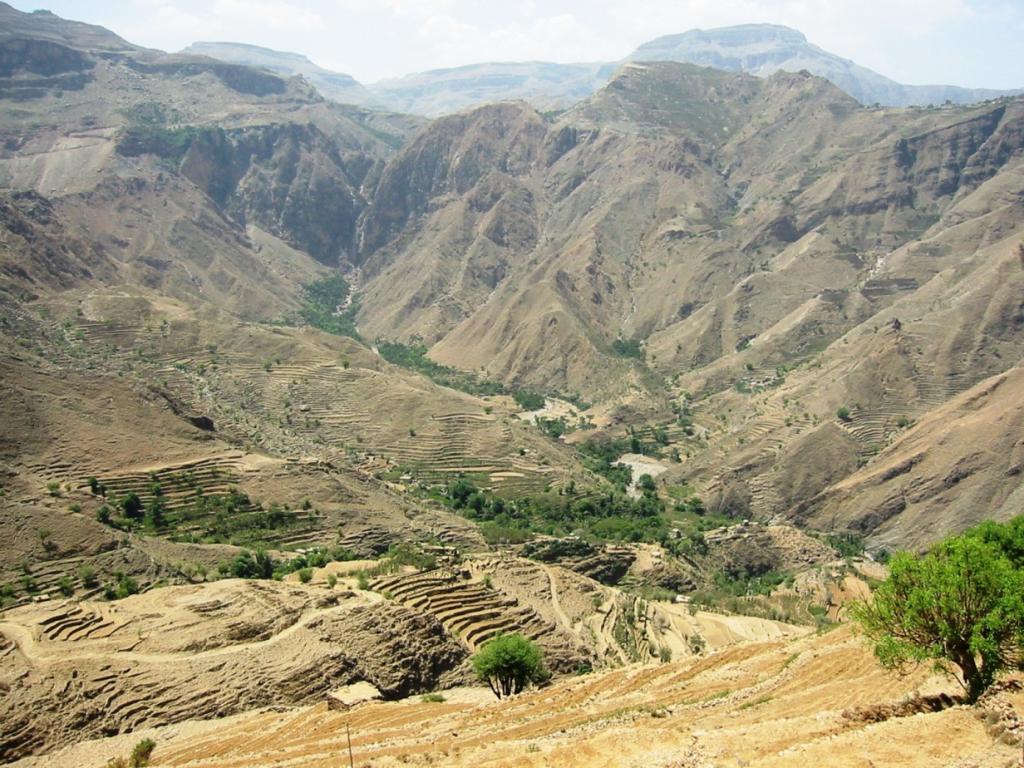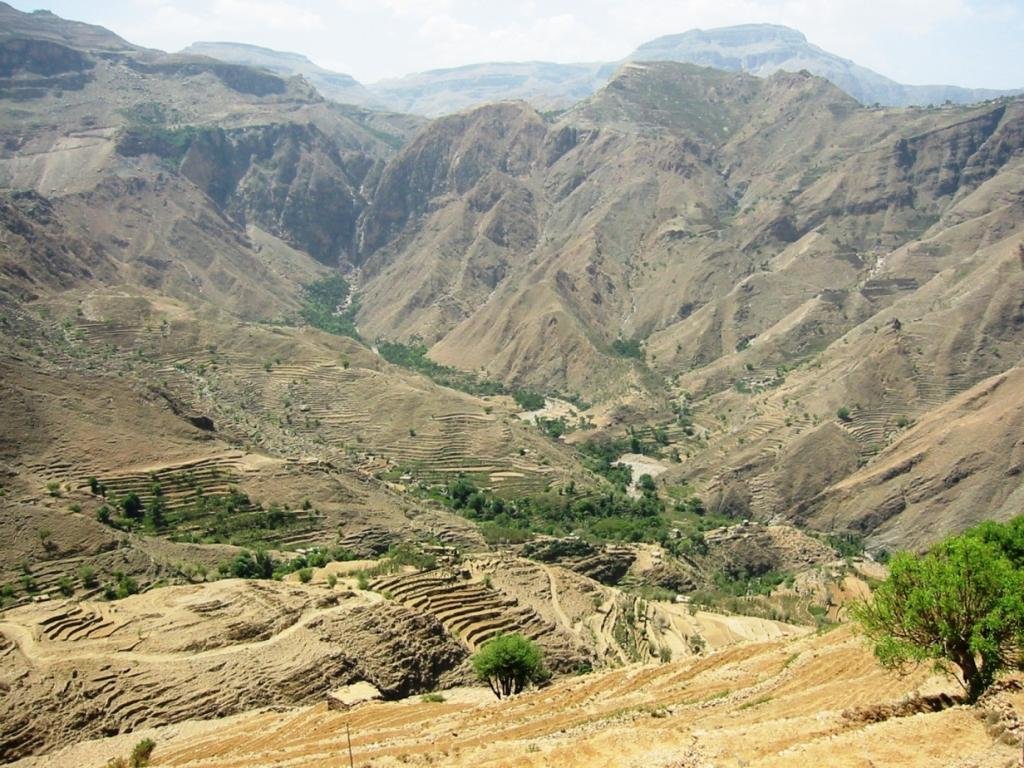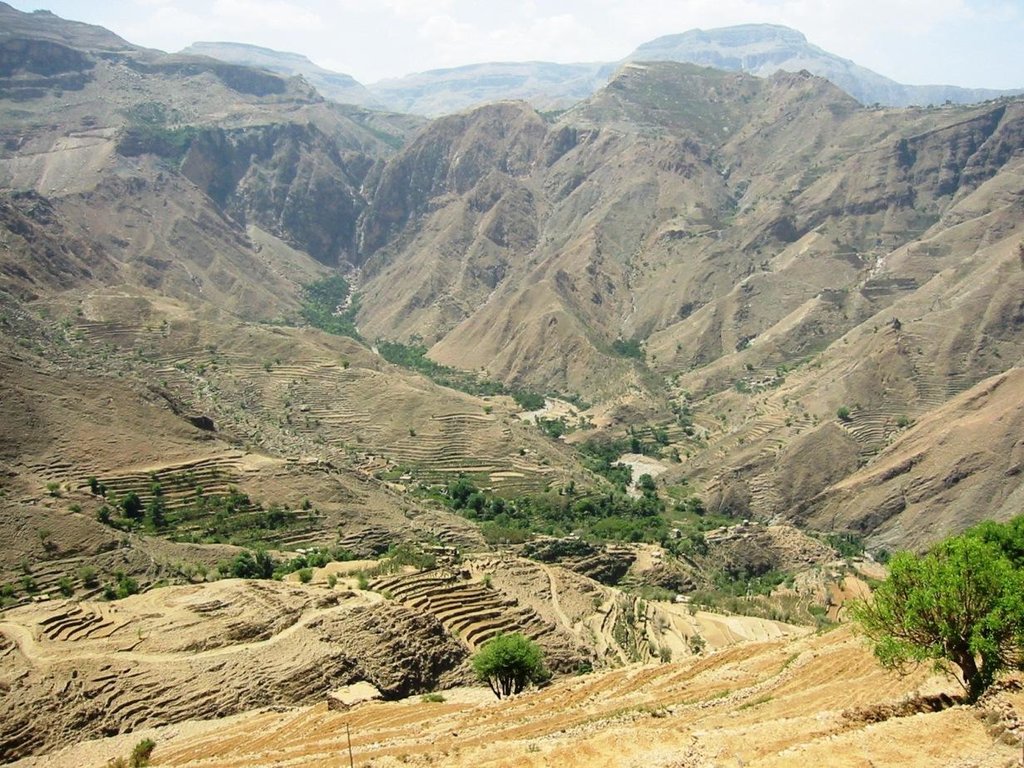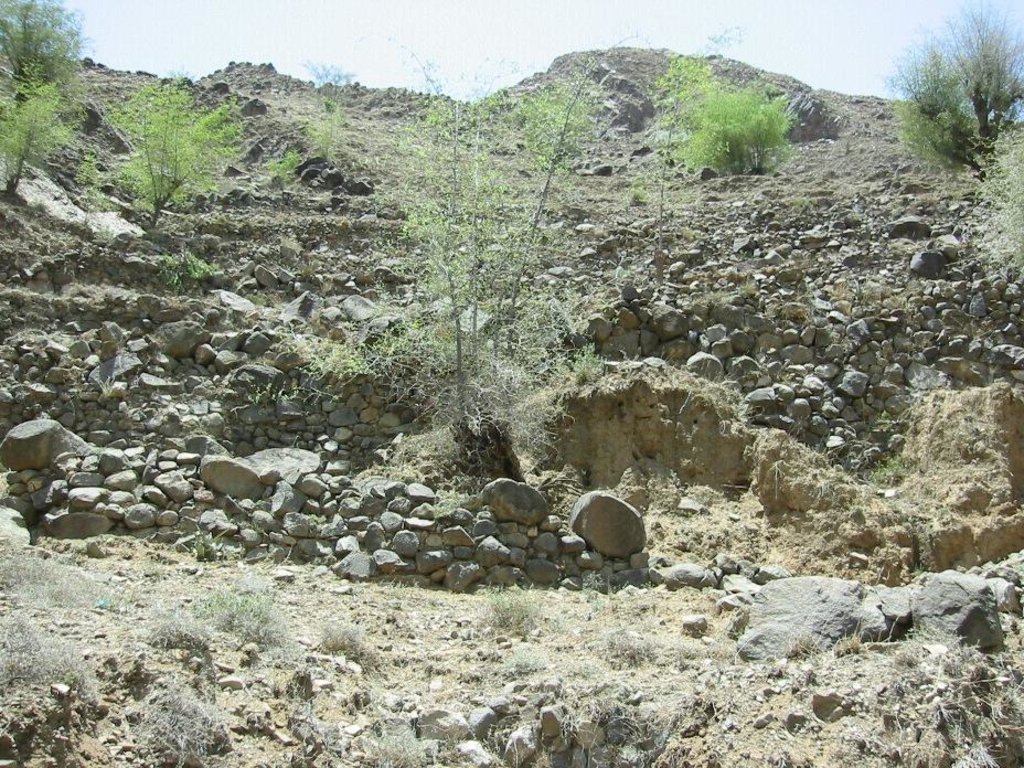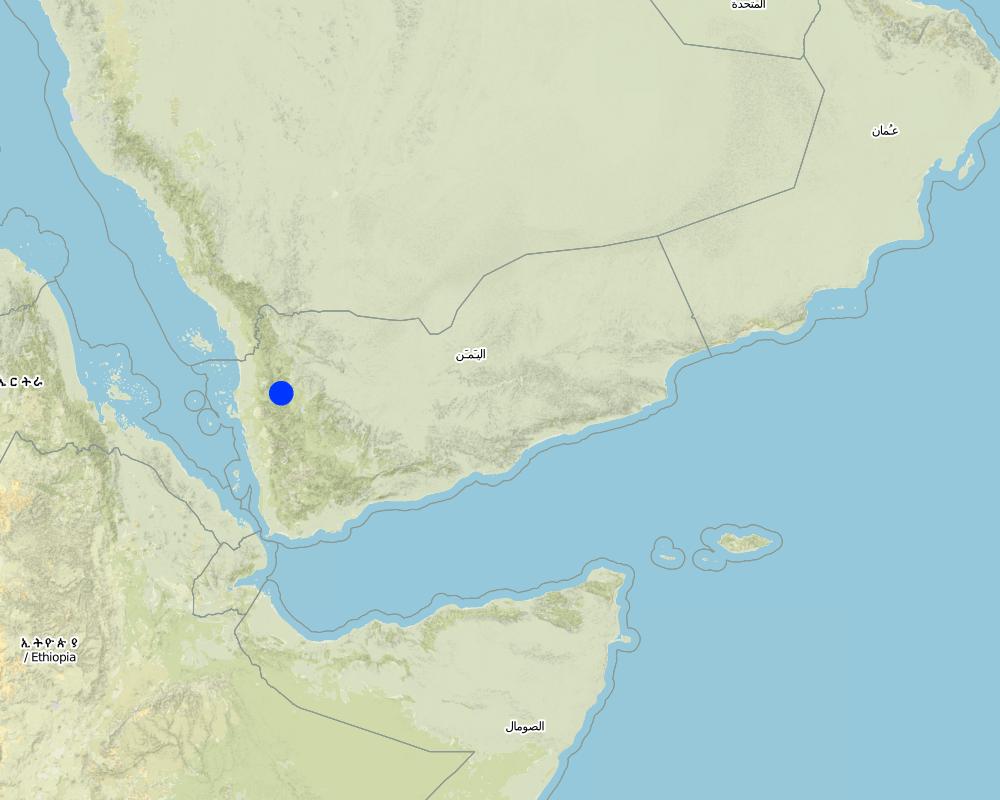leveled mountain terraces [Iêmen]
- Criação:
- Atualização:
- Compilador/a: ahmed algalal
- Editor: –
- Revisor: Fabian Ottiger
المدرجات الجبلية المستوية
approaches_2621 - Iêmen
Veja as seções
Expandir tudo Recolher tudo1. Informação geral
1.2 Detalhes do contato das pessoas capacitadas e instituições envolvidas na avaliação e documentação da abordagem
Especialista em GST:
Almashreki Mohammed
mashreki2000@yahoo.com
Agricultural Research and Extension Authority, AREA
Iêmen
Nome da(s) instituição(ões) que facilitou(ram) a documentação/avaliação da Abordagem (se relevante)
Agricultural Research and Extension Authority (AREA) - Iêmen1.3 Condições em relação ao uso da informação documentada através de WOCAT
Quando os dados foram compilados (no campo)?
09/02/2013
O/a compilador/a e a(s) pessoa(s) capacitada(s) aceitam as condições relativas ao uso de dados documentados através da WOCAT:
Sim
1.4 Referência ao(s) questionário(s) sobre tecnologias da GST
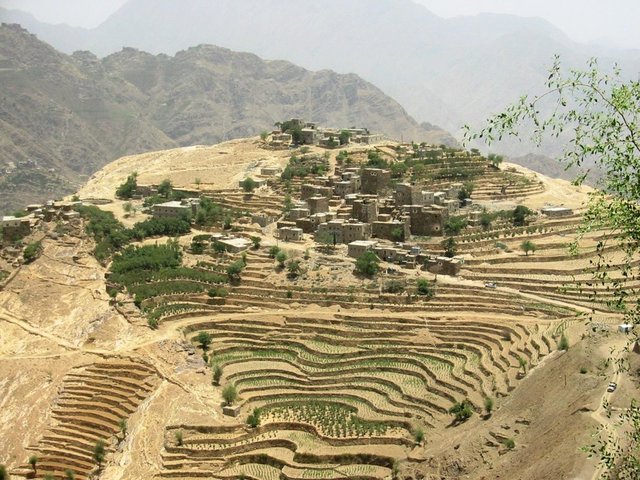
Flat Contour Terraces [Iêmen]
Old flat terraces were built in accordance with the contour lines and surrounded by stones to create a suitable environment for the growth of crops, slope stabilization and reduce the risk of runoff and increasing water harvesting.
- Compilador/a: ahmed algalal
2. Descrição da abordagem de GST
2.1 Descrição curta da abordagem
organized collective action at a high pace for building agricultural terraces to improve livelihoods in resource-scarce regions in the ground
2.2 Descrição detalhada da abordagem
Descrição detalhada da abordagem:
Aims / objectives: A lot of agricultural land in mountain plains are mountain terraces were established in Yemen a long time ago and which constitute a method agriculturally traditionally unique since 2000 BC where it was built in steep slope places more than 60%, which works to change the shape of the slope (angle and length of the slope), which in turn leads to reduced Speed runoff, which helps to harvest water and protect the land from erosion.
The main objective of the establishment of the stands is to create a suitable environment for the growth of crops for the purpose of self-sufficiency due to a limited of arable land where invoked farmers veterans to create these terraces on the hillsides steep in order to increase the agricultural area and benefit from the runoff water to meet the crop water requirements and thereby increase productivity , in addition to the tower the terraces is working to change the shape of the slope and mitigate the damage resulting from the runoff, on the one hand.
Other works on the terraces to give a special character of beauty and greenery on the slopes and planted joy and hope in the hearts of the people and enhance their adherence to this tradition as long as shares in the stability and meet the needs of the population.
Terraces were built by the community in which concerted action all classes for the construction of terraced disease extraction of soil and collect stones and the end of the settlement of the soil and planting
2.3 Fotos da abordagem
2.5 País/região/locais onde a abordagem foi aplicada
País:
Iêmen
Região/Estado/Província:
Hajah Governorate
Especificação adicional de localização:
Kahlan Afar
Map
×2.7 Tipo de abordagem
- Tradicional/Indígena
2.8 Principais metas/objetivos da abordagem
The Approach focused mainly on SLM with other activities (Increase the agricultural area, water harvesting, increasing the productivity of the crop)
Creating a suitable environment for the growth of crops, prevent soil loss, minimize the risk resulting from the rapid runoff, water harvesting and increase soil moisture
The SLM Approach addressed the following problems: the lack of arable land, the soil water erosion, poverty
2.9 Condição que propiciam ou inibem a implementação de tecnologia/tecnologias aplicada(s) segundo a abordagem
Disponibilidade/acesso a recursos e serviços financeiros
- Inibitivo
lack of money
Treatment through the SLM Approach: use of available resources in the region
Quadro jurídico (posse de terra, direitos de uso da terra e da água)
- Propício
The existing land ownership, land use rights / water rights greatly helped the approach implementation: did not occurs raised to the implementation process because the bleachers at the foundation and found out of nowhere and work on community-created en masse, however, has been the work of legislation to regulate the process and maintenance of irrigation terraces
- Inibitivo
Water Rights
Treatment through the SLM Approach: Documentation of an agreement between the land users on the method of water distribution and irrigation priority so that it is the first former regime from top to bottom
Carga de trabalho, disponibilidade de força de trabalho
- Inibitivo
Lack of labor
Treatment through the SLM Approach: work collectively at all stages of the implementation of the technology
3. Participação e papel das partes interessadas envolvidas
3.1 Partes interessadas envolvidas na abordagem e seus papéis
- Usuários de terra/comunidades locais
All local community. Approach includes all parts of society, because the person who created the stands is all members of society without exception
Men have more experience and ability to work. Women do works that are commensurate with their ability
3.2 Envolvimento do usuários de terra/comunidades locais nas diferentes fases da abordagem
| Envolvimento do usuários de terra/comunidades locais | Especifique quem estava envolvido e descreva as atividades | |
|---|---|---|
| Iniciação/motivação | Nenhum | |
| Planejamento | Nenhum | |
| Implementação | Nenhum | |
| Monitoramento/avaliação | Nenhum | |
| Research | Nenhum |
3.4 Decisão sobre a seleção de tecnologia/tecnologias de GST
Especifique quem decidiu sobre a seleção de tecnologia/tecnologias a serem implementadas:
- Somente usuários da terra (iniciativa própria)
Explique:
It is originally an ancient technique and exist but need to be rebuilt
Decisions on the method of implementing the SLM Technology were made by by land users* alone (self-initiative / bottom-up)
4. Suporte técnico, reforço das capacidades e gestão do conhecimento
4.1 Reforço das capacidades/ formação
Foi oferecida formação aos usuários da terra/outras partes interessadas?
Não
4.3 Fortalecimento da instituição (desenvolvimento organizacional)
As instituições foram fortalecidas ou estabelecidas através da abordagem?
- Não
4.4 Monitoramento e avaliação
Monitoramento e avaliação são partes da abordagem?
Sim
Comentários:
bio-physical aspects were ad hoc monitored by land users through observations; indicators: wise and dignitaries with the correct mind.
technical aspects were ad hoc monitored by land users through measurements; indicators: wise and dignitaries with the correct mind.
socio-cultural aspects were regular monitored by land users through measurements
economic / production aspects were ad hoc monitored by land users through observations
no. of land users involved aspects were regular monitored by other through measurements
management of Approach aspects were regular monitored by other through measurements
There were no changes in the Approach as a result of monitoring and evaluation
There were no changes in the Technology as a result of monitoring and evaluation
4.5 Pesquisa
A pesquisa foi parte da abordagem?
Não
5. Financiamento e apoio material externo
5.1 Orçamento anual para o componente de GST da abordagem
Caso o orçamento exato seja desconhecido, indique a faixa:
- 2.000-10.000
Comentários (p. ex. principais fontes de recursos/principais doadores):
Approach costs were met by the following donors: local community / land user(s) (Local community): 100.0%
5.4 Crédito
Foi concedido crédito segundo a abordagem para atividades de GST?
Não
6. Análise de impactos e declarações finais
6.1 Impactos da abordagem
A abordagem auxiliou os usuários da terra a implementar e manter as tecnologias de GST?
- Não
- Sim, pouco
- Sim, moderadamente
- Sim, significativamente
teamwork is one of the most important elements of sustainable land and protect it from deterioration and this the approach, which followed by the old farmers even continued the stands terraces to this day.
Did other land users / projects adopt the Approach?
- Não
- Sim, pouco
- Sim, moderadamente
- Sim, significativamente
Did the Approach lead to improved livelihoods / human well-being?
- Não
- Sim, pouco
- Sim, moderadamente
- Sim, significativamente
Did the Approach help to alleviate poverty?
- Não
- Sim, pouco
- Sim, moderadamente
- Sim, significativamente
The increase in the agricultural area, water harvesting areof the most essential ingredients to alleviate poverty.
6.2 Principal motivação dos usuários da terra para implementar a GST
- Produção aumentada
Increase the amount of production
- Consciência ambiental
- The creation of new agricultural land
- Stability and improve the people's livelihood
6.3 Atividades de sustentabilidade de abordagem
Os usuários da terra podem manter o que foi implementado através da abordagem (sem apoio externo)?
- Sim
Caso afirmativo, descreva como:
Terraces built without support and continued to the present day
6.4 Pontos fortes/vantagens da abordagem
| Pontos fortes/vantagens/oportunidades na visão do/a compilador/a ou de outra pessoa capacitada |
|---|
| Improve the livelihoods and the stability of society (How to sustain/ enhance this strength: Continuing to maintenance operations) |
| A tributary of real teamwork in advancing progress and achieve the desired goal, namely, agricultural terraces and teamwork lead to the strengthening of the social fabric and the bonds of love and assistance among themselves (How to sustain/ enhance this strength: Community awareness and land users in particular, the importance of the continuation of collective action to ensure the sustainability and continuity of the stands that need to unite everyone to preserve them for future generations.) |
| Take advantage of all the resources available in the region in the process of construction of terraces traditional methods and in accordance with the natural conditions and topography of the region |
7. Referências e links
7.1 Métodos/fontes de informação
- visitas de campo, pesquisas de campo
- entrevistas com usuários de terras
7.2 Referências às publicações disponíveis
Título, autor, ano, ISBN:
Report of the environmental resources available in the Afar region Kahlan (Mashreki, 2003)A study of land degradation in the Republic of Yemen (Yemen - ACSAD, 2002
Disponível de onde? Custos?
Agricultural Research and Extension Authority, AREAAgricultural Research and Extension Authority, AREA
Título, autor, ano, ISBN:
A study of land degradation in the Republic of Yemen (Yemen - ACSAD, 2002)
Disponível de onde? Custos?
Agricultural Research and Extension Authority, AREA
Links e módulos
Expandir tudo Recolher tudoLinks

Flat Contour Terraces [Iêmen]
Old flat terraces were built in accordance with the contour lines and surrounded by stones to create a suitable environment for the growth of crops, slope stabilization and reduce the risk of runoff and increasing water harvesting.
- Compilador/a: ahmed algalal
Módulos
Não há módulos


